Illuminated
Histories
Maggie Libby ’81 loves a good mystery. But instead of a whodunit, the pressing question is, where are the women?
More specifically, where are Colby’s women?
An artist and worker rooted in Maine, Libby (they/them) has for nearly a decade worked tirelessly to answer that question through Hidden Histories: a project by Maggie Libby. The series reconstructs a history of Colby’s 19th- and 20th-century women using mixed-media portraits, biographical texts, altered books, and storyboards using source material from the College’s archive. Libby’s research informs this feature story by guiding Christina Nunez’s narrative and illustrating these pages.
As curator of digital discovery and engagement at Colby’s Special Collections and Archives, Libby holds a deep store of institutional knowledge of the College’s visual histories—as well as silences in the archives.
Hidden Histories documents women’s images, voices, and stories to make visible a piece of Colby’s history previously missing from public spaces and conversations. Their inclusion adds an essential richness to the College’s social and intellectual history.
Libby started the project with large-scale portraits of the first women to attend Colby in the 1870s. Since then, they’ve expanded it to cover notable women faculty and staff, who, through the centuries, have proved vital to the life of the College.
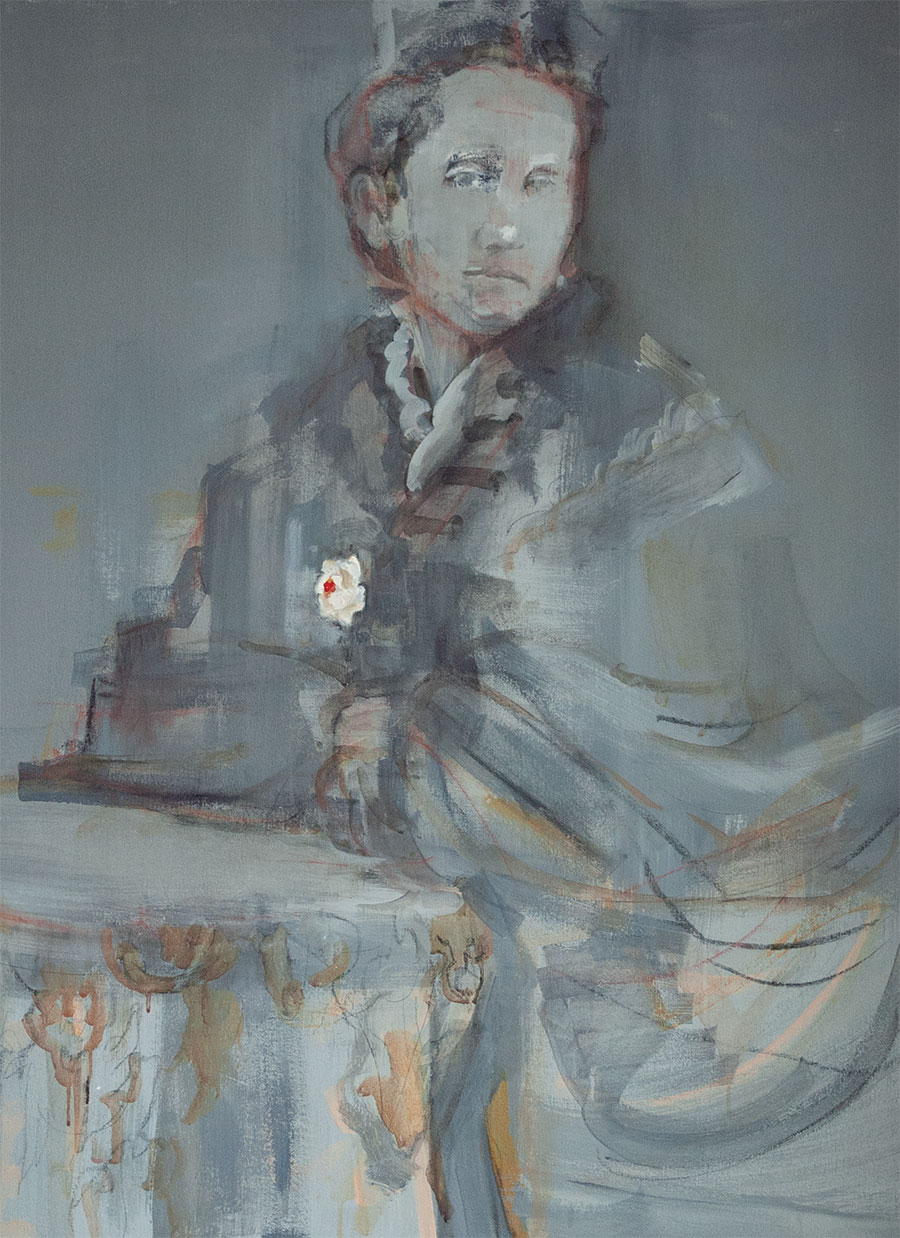
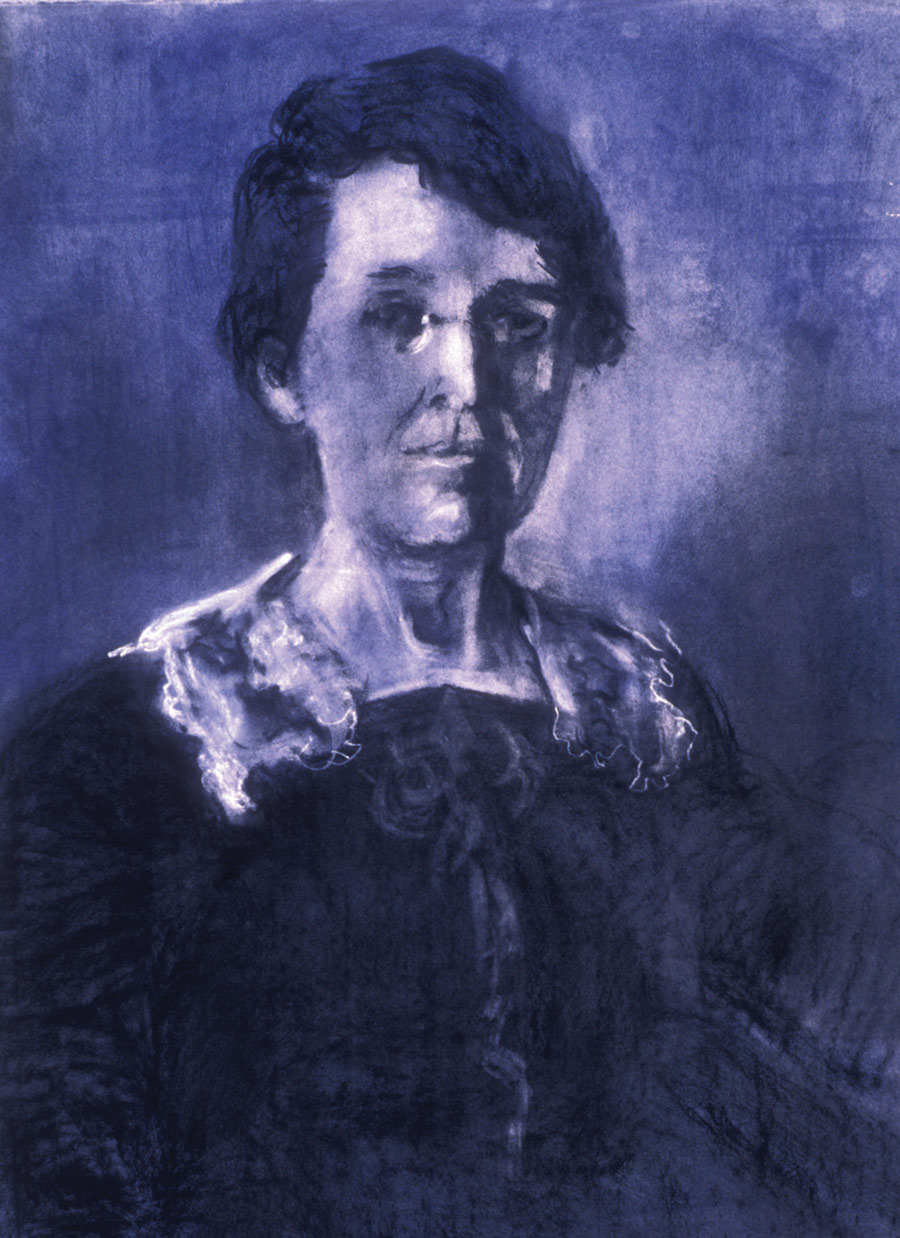
“I also wipe, spray, scratch, and redraw to build up a rich sense of things left out, hidden information and excavated histories,” they said. Collaged elements and artifacts add to each portrait, contributing layers to the piece’s physical history.
Currently, Libby stewards multiple oral history projects to enlarge the College’s archives; they’re also constructing a timeline of women’s history at Colby. And, in the spring 2022 semester, Libby has the honor of being the first visiting staff artist at Colby’s downtown Greene Block + Studios, where they’ll begin a storyboard for a graphic novel on an intersectional history of women at Colby.
Hidden Histories brings forward neglected narratives, illuminates them, and boldly places them in contemporary conversations. Thanks to the support of Pat Burdick, assistant director of special collections, and Special Collections and Archives, as well as a purchase by former President William “Bro” Adams, many of Libby’s portraits hang in Miller Library’s Eugenia Hall Wormser ’60 Reading Room, where young scholars study in their commanding presence.
These prodigious portraits convey the energy and agency of Colby’s tough and intelligent women, now no longer a mystery.
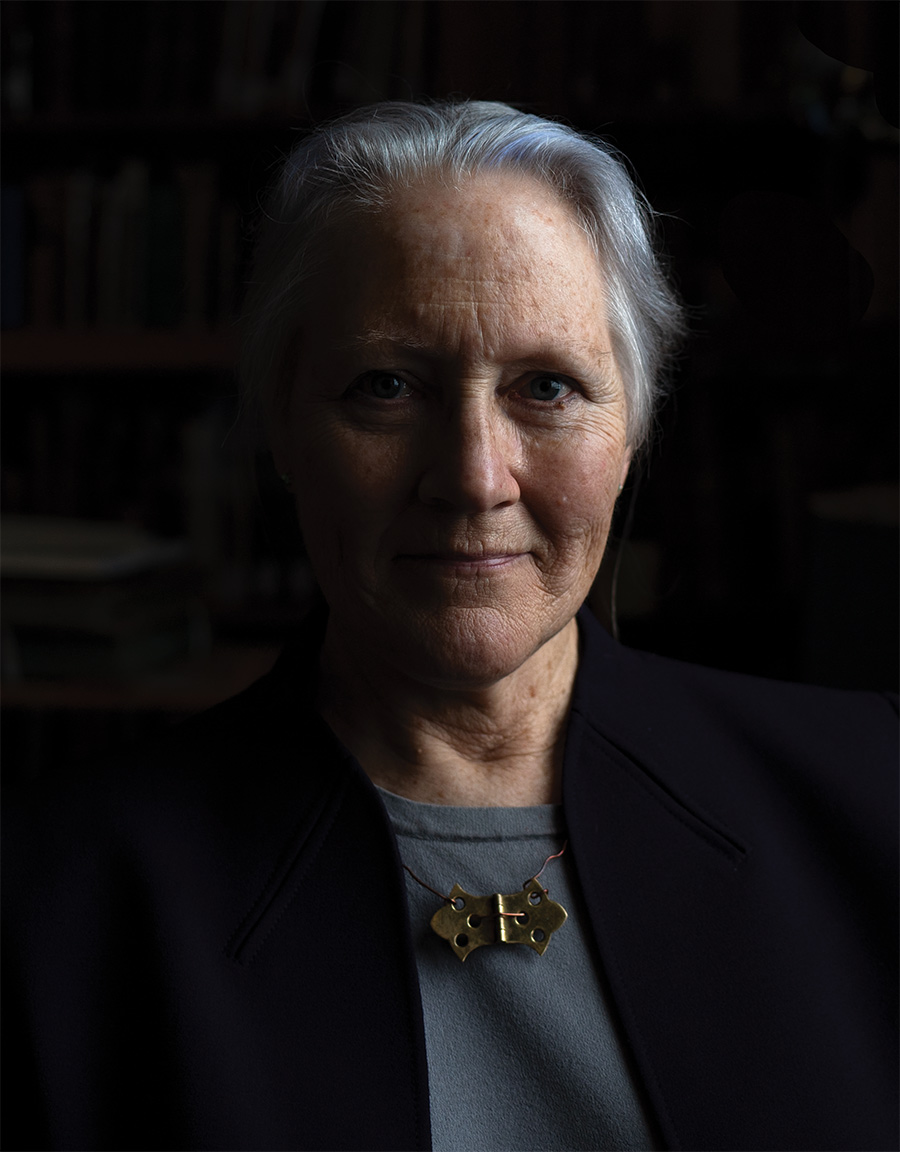
The Board of Trustees listened, adopting her suggestions, known as the “Nunez Proposal,” as policy in 1962. It required every fraternity or sorority local undergraduate chapter to certify it had the right to select its members without regard to race, religion, or national origin. Subsequent movements at Colby have continued to seek inclusion for students of color.
Nunez’s urgency was poignant as she died young, claimed by Hodgkin’s disease at age 27. But her legacy was lasting because she helped the College define its values during a critical time of change in the country.
Colby added its first women’s studies course in 1972, and over the balance of the decade professors Phyllis Mannocchi, Jane Moss, and Sonya French, representing the English, French, and Sociology departments, developed feminist and anti-racist courses and programming. In 1980, 250 students signed a petition asking for an interdisciplinary major in women’s studies, and a year later they got it. Colby’s Women’s Studies Program became the first in Maine.
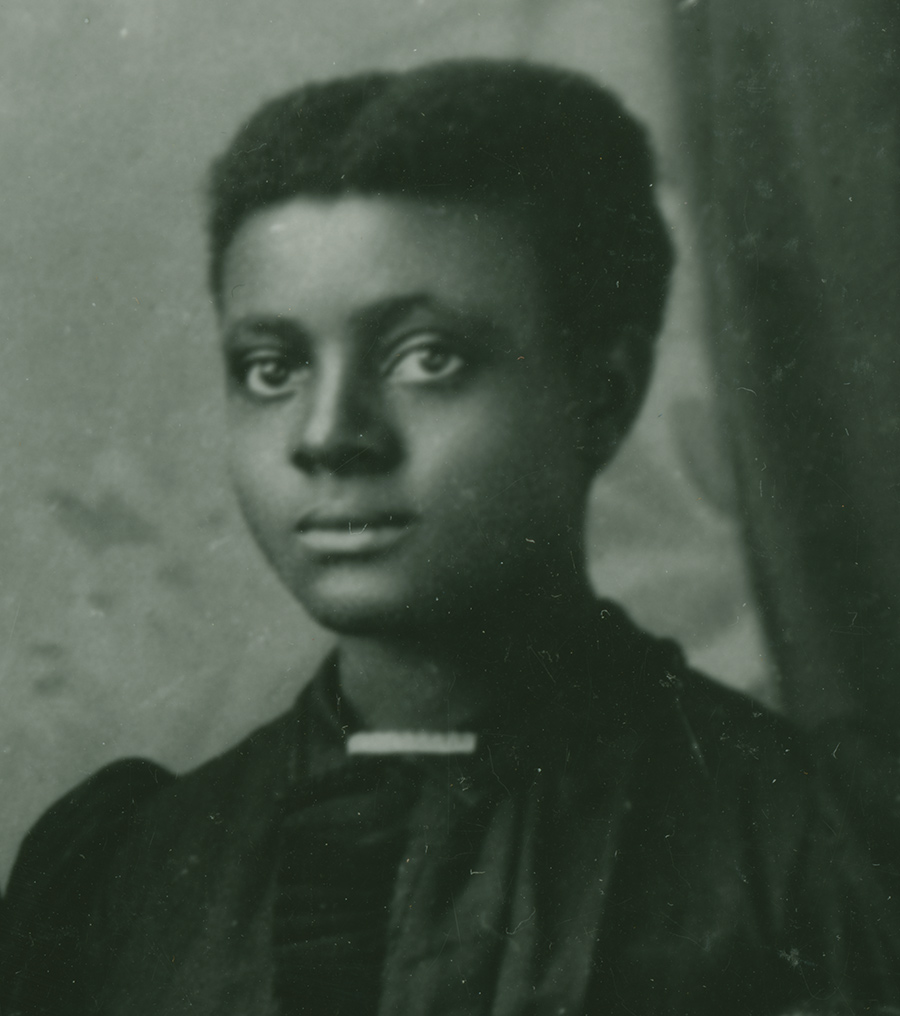
Marion Osborne, Class of 1900, was the first Black female student to graduate from Colby.
The 1980s saw huge growth in the program, with 35 faculty members teaching across disciplines, and in 1995 women’s studies became its own major. In 2002 Colby convened a Queer Task Force to improve inclusion of gay, lesbian, bisexual, and transgender people. As a result of the task force’s work, the name changed to the Women’s, Gender, and Sexuality Studies Program and expanded programming accordingly.
In the sporting realm, a group of committed hockey players successfully lobbied the administration for the creation of a women’s ice hockey team, and in February 1973 Colby made national news when it hosted the first intercollegiate women’s ice hockey game, against Brown. The Mules won, 3-2.
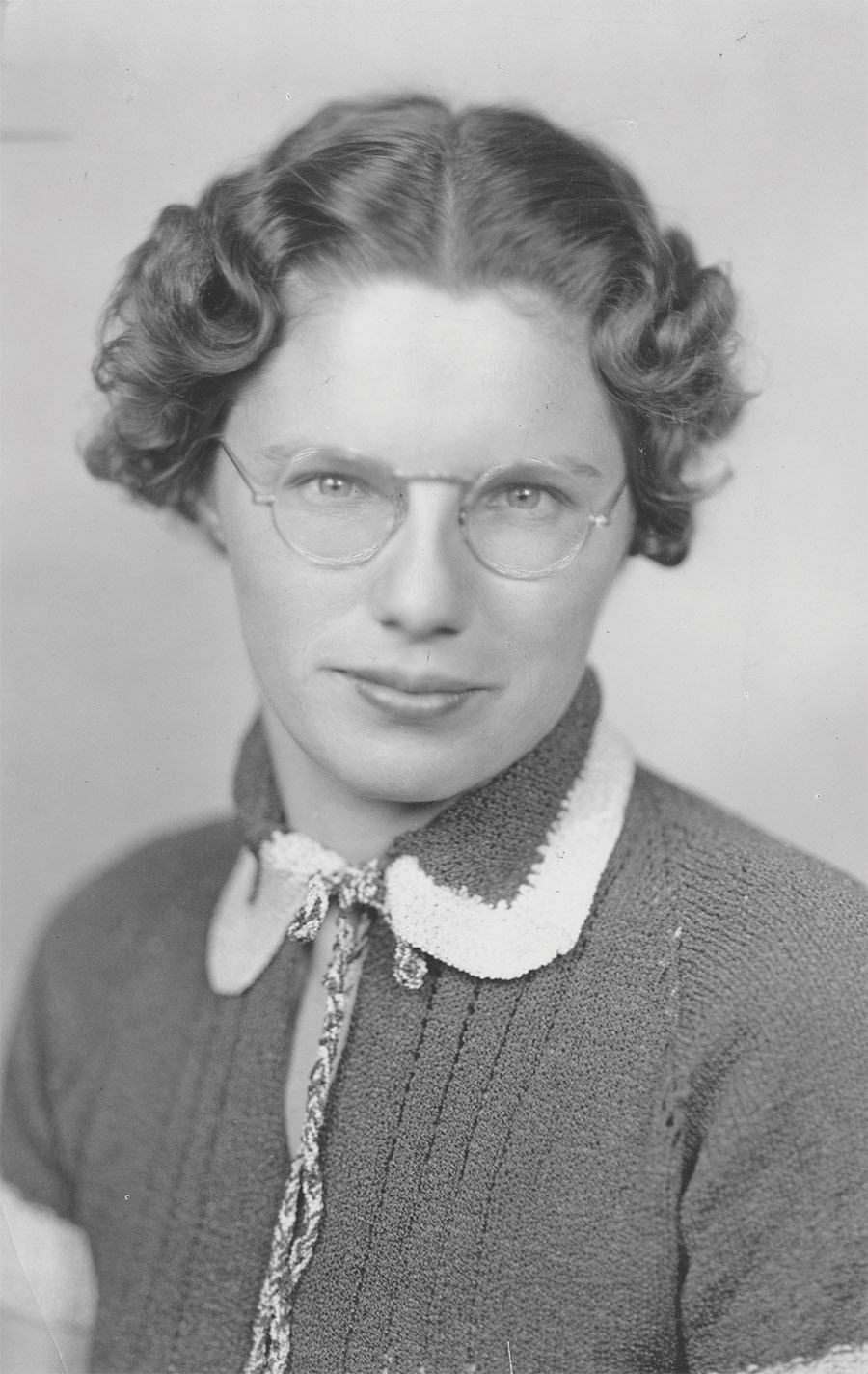
Colby hired Marjorie Bither, a lifelong champion for female athletes, as one of the first women in the nation to run a coed collegiate physical education program. She is shown here in 1974. Top right: Colby made national news when it hosted the first intercollegiate women’s ice hockey game in 1973. Bottom right: Women’s Ice Hockey Head Coach Holley Tyng talks to the team mid-game.
Courtesy of Special Collections & Archives, Colby College Libraries
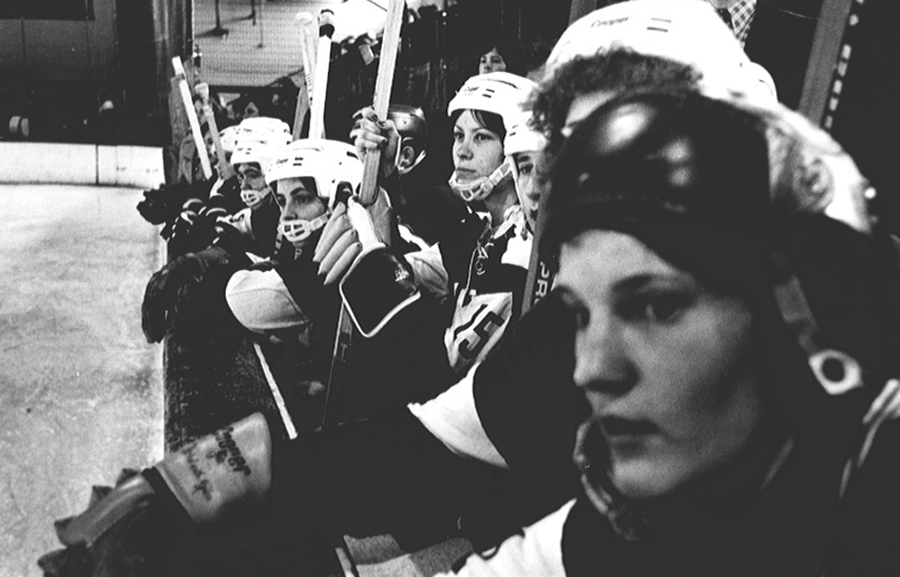
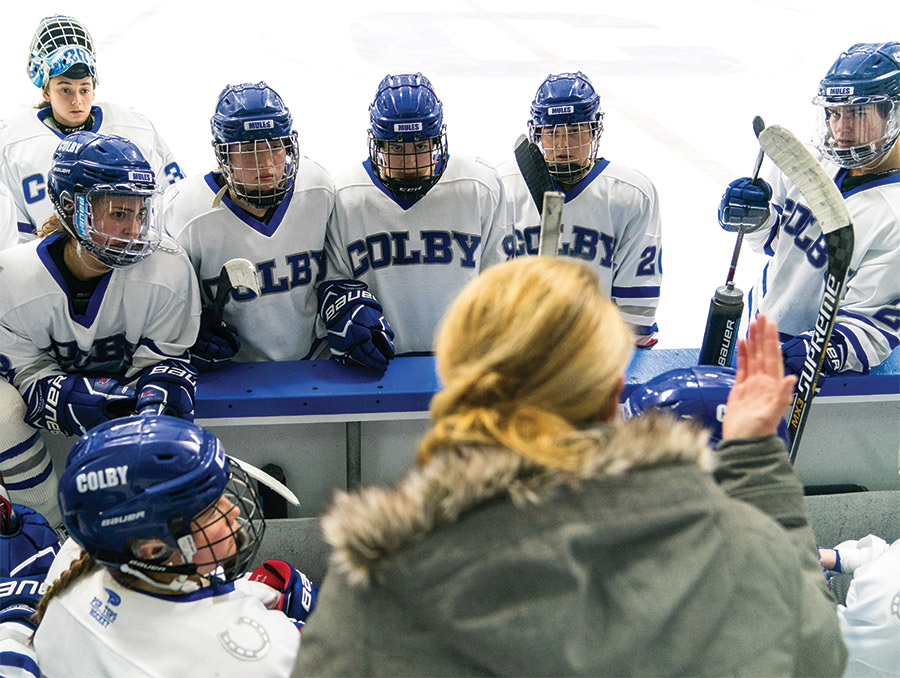



Women’s Ice Hockey Head Coach Holley Tyng talks to the team mid-game.
Courtesy of Special Collections & Archives, Colby College Libraries
The hockey team blazed a trail, becoming Colby’s first women’s varsity team, in 1975, followed by softball, cross-country, lacrosse, soccer, swimming, squash, Nordic skiing, and other sports. By 1980 Colby supported 12 varsity sports each for women and men, the first time there were equal opportunities.
The move to Mayflower Hill
Women were first to the new campus, which was funded and built throughout the 1930s. In the fall of 1942, they lived in buildings named for the first women graduates, Low and Coburn. Finally, thanks in large part to Runnals, women had the amenities and gathering places on Mayflower Hill they had long sought.
“Loyalty to our college does not mean that we are blind to its imperfections,” Runnals said during an address at Colby Night, an athletic awards celebration, in 1963. “Loyalty does mean that we must steadily love Colby and work, as much as in us lies, for her progress and improvement.”
Legacy of daughters
Every generation of women that joins the College brings with it new ideas and improvements, McFadden observed.
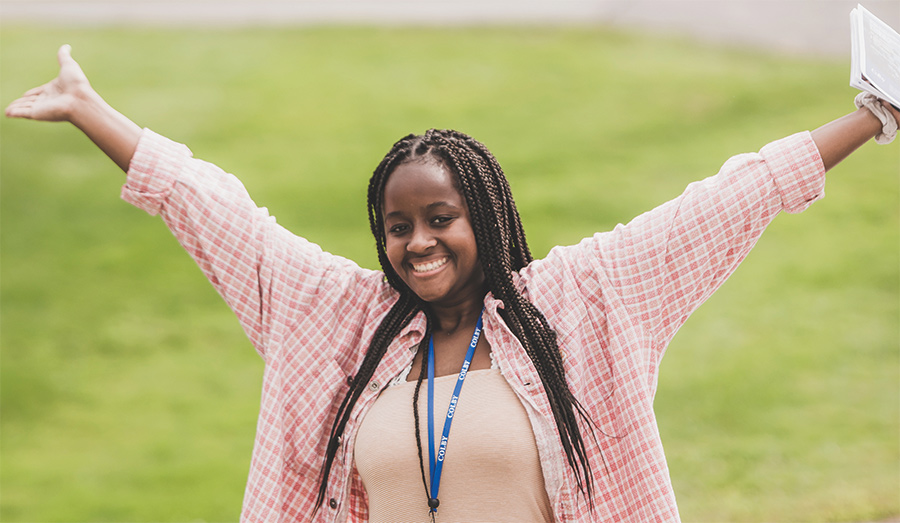
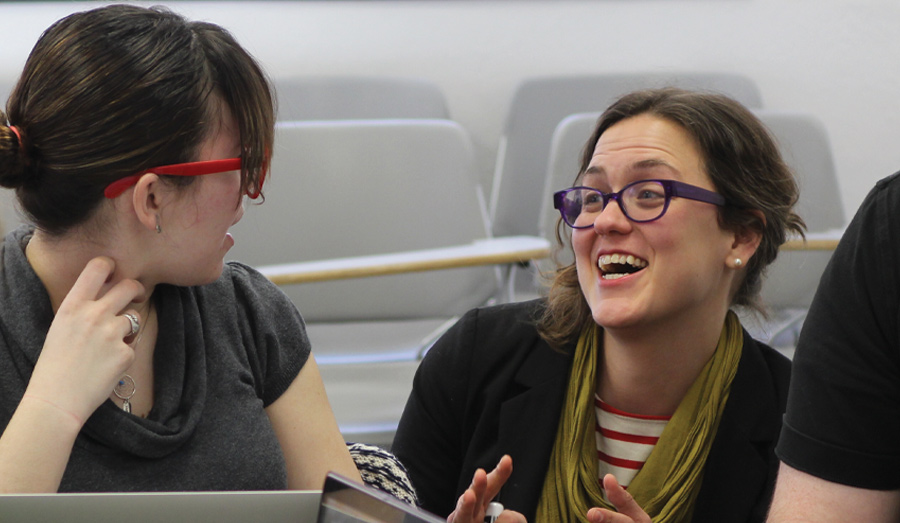
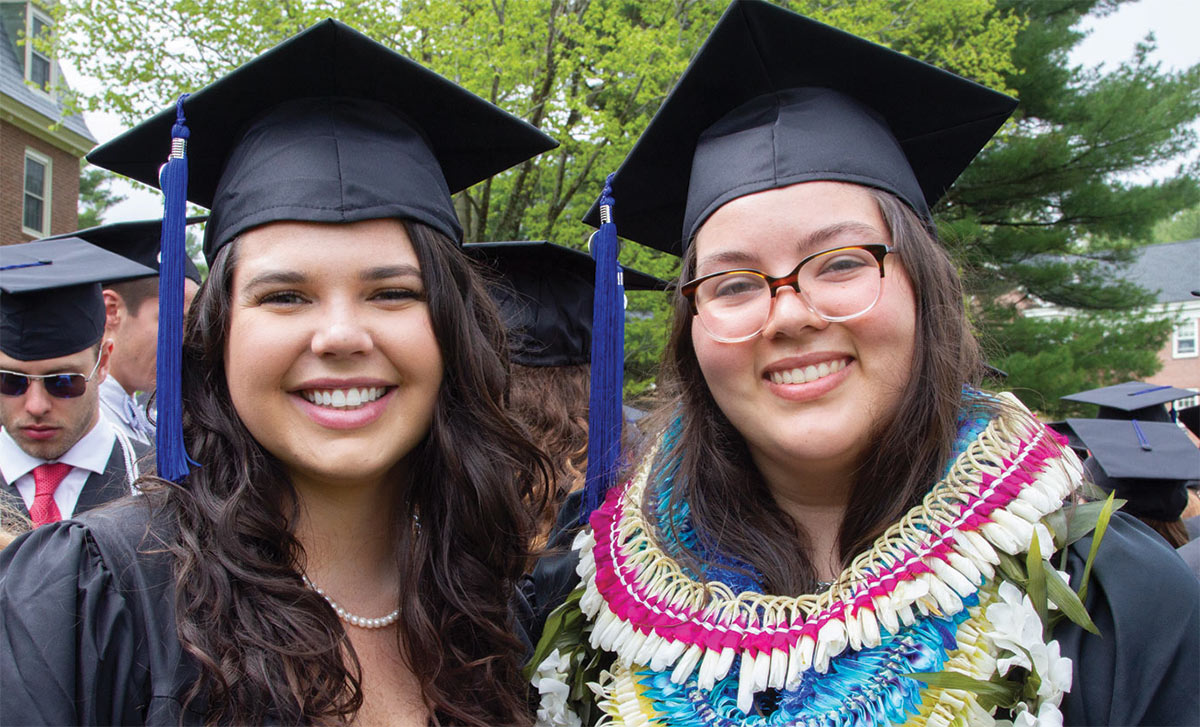
That pioneering first student, Mary Low, went on to become a teacher and librarian. Her daughter, Ruby, graduated from Colby in 1904. Over 150 years, women at Colby have upheld storied traditions and forged new ones. They receive an excellent liberal arts education and make what they will of it, giving the lie to the old argument that women somehow needed to be protected from knowledge or guided in what type to acquire.
In her rebuttal against separating the sexes back in 1890, Low made a point that still rings true today. A liberal education shouldn’t fit men to be fathers and lawyers and women to be mothers and schoolteachers, she wrote: “The ideal college course does not specialize. It trains neither men nor women as such. Its proper object is to develop mind as the basis of character.”